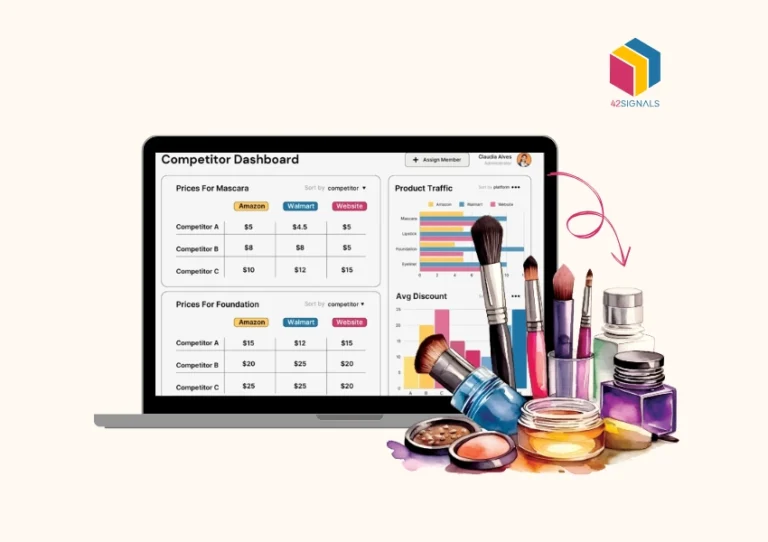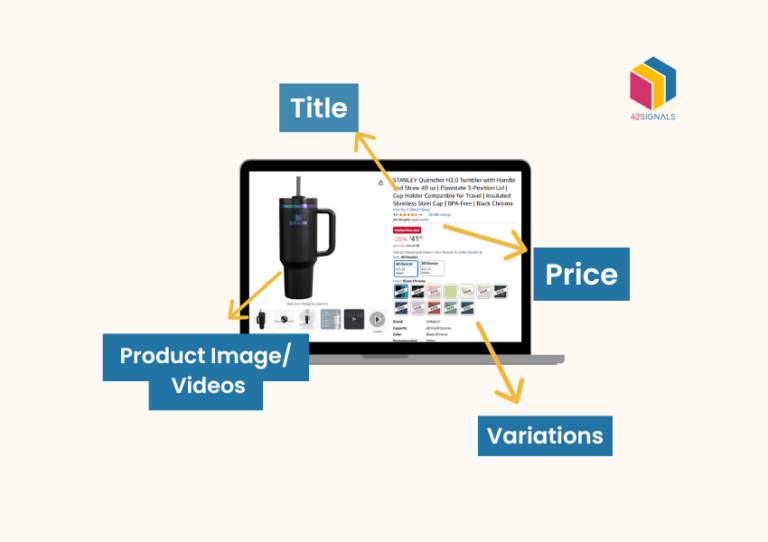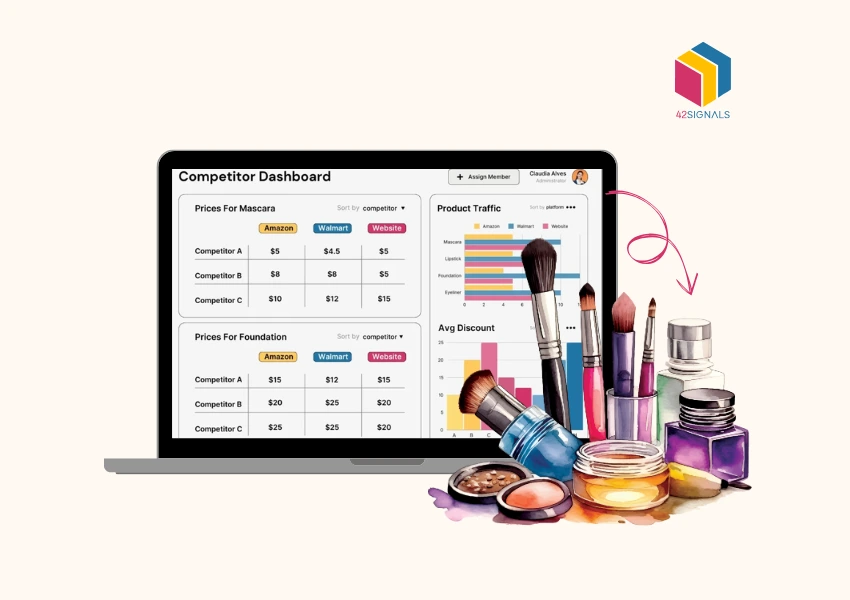For businesses to perform better today, it’s not only sufficient to create a fine product that’s marketed well; considering consumer viewpoints is crucial too. Ever stopped to wonder what customers are really thinking about your product or service? That’s where Voice of Customer Analytics (VoC Analytics) comes into play. This tool delves deep into the raw, unfiltered thoughts and feelings of customers.
When it comes to sculpting a top-notch customer experience, nothing shines a light on the path forward like VoC Analytics, especially in understanding how customers truly feel about your brand.
So, What’s Voice of Customer Analytics All About?
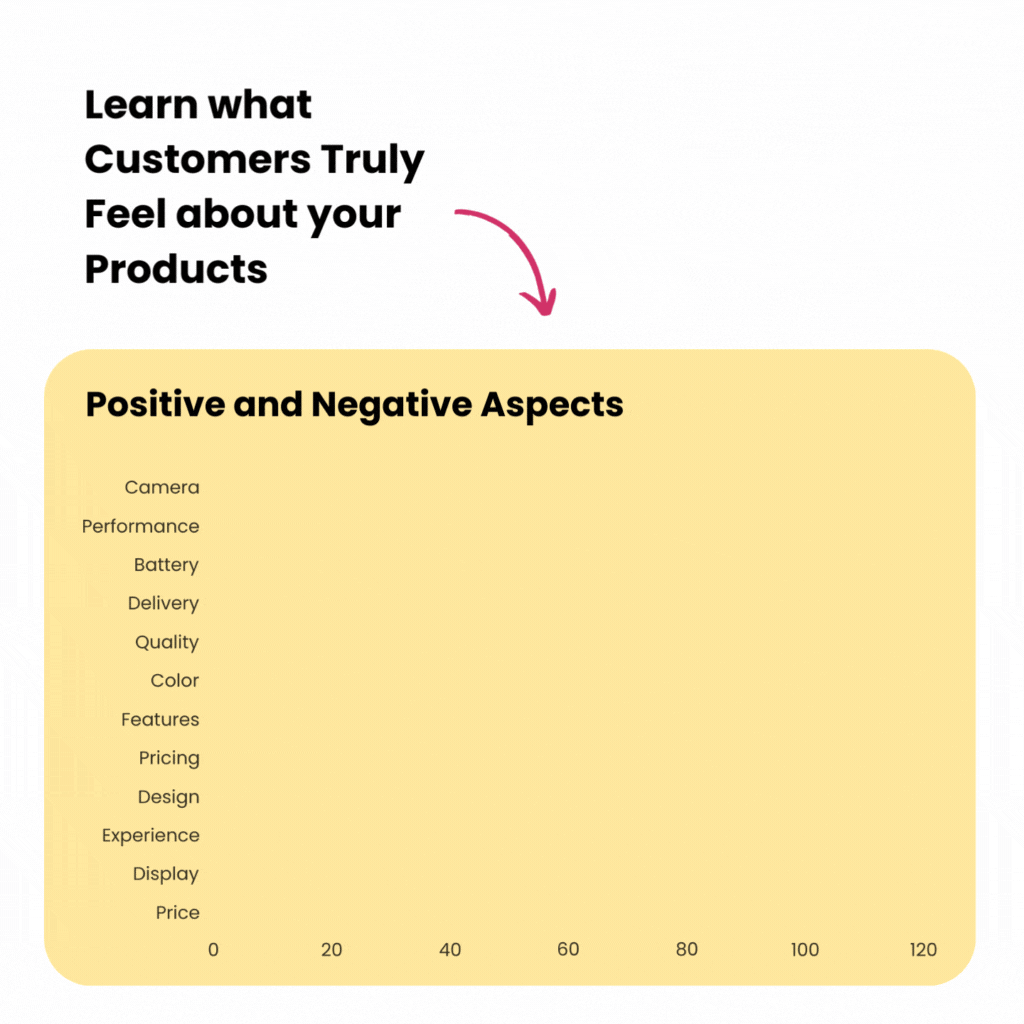
Imagine a treasure chest filled with feedback, opinions, and sentiments from your customers, collected from surveys, social media buzz, reviews, support chats, and even unsolicited emails. Now, imagine sifting through this chest, polishing each gem of insight, and using it to map a course toward customer-centric growth.
That’s Voice of Customer (VoC) Analytics. It’s not just about collecting feedback but decoding it to answer critical questions: What do customers truly want? Where are we falling short? What emotions drive their loyalty or frustration? VoC transforms raw, often chaotic feedback into a structured narrative that informs product development, service enhancements, and marketing strategies.
The Three Pillars of Customer Insights: CSAT, NPS, and CES
VoC Analytics relies on three core systems to quantify and categorize customer sentiment:
CSAT (Customer Satisfaction Score)
What it measures: Short-term satisfaction with a specific interaction (e.g., a purchase, support call, or website experience).
Example: After a customer buys a laptop, a survey asks, “How satisfied are you with your purchase today?” scored 1–5. A low CSAT on shipping speed could signal the need for better delivery partners.
NPS (Net Promoter Score)
What it measures: Long-term loyalty and likelihood to recommend your brand.
Example: The classic question: “On a scale of 0–10, how likely are you to recommend us to a friend?” Detractors (0–6) may highlight churn risks, while Promoters (9–10) can be leveraged for testimonials or referral programs.
CES (Customer Effort Score)
What it measures: Ease of completing an action (e.g., resolving an issue, returning a product).
Example: Post-support interaction: “How easy was it to resolve your issue today?” A high CES (indicating high effort) might expose clunky processes, like a 5-step return form, that need streamlining.
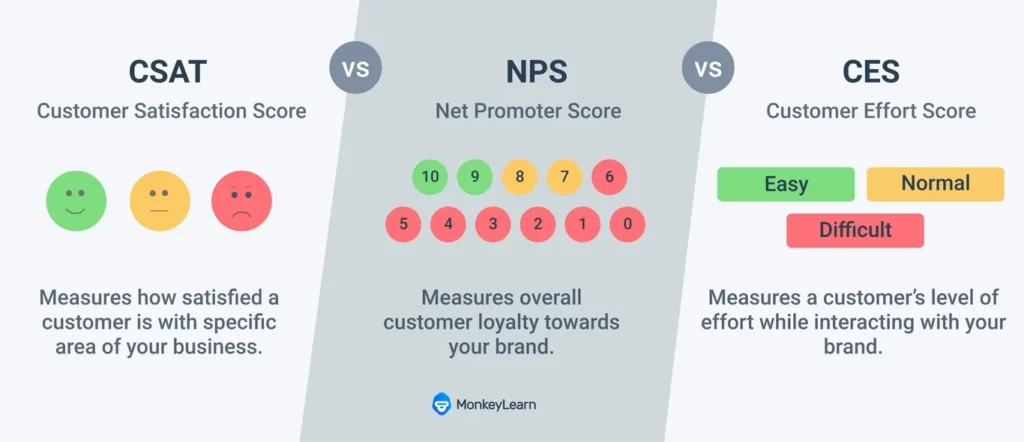
Image Source: MonkeyLearn
Turning Noise into Action: The Voice of Customer Analytics Process
- Data Collection: Gather feedback across touchpoints:
- Direct: Surveys, interviews, focus groups.
- Indirect: Social media mentions, reviews (Trustpilot, Google Reviews), support tickets, chatbot logs.
- Passive: Behavioral data (e.g., rage clicks on a webpage, session replays showing checkout friction).
- Sentiment Analysis: Use AI tools (MonkeyLearn, Medallia) to categorize feedback as positive, negative, or neutral. For instance, a review saying, “The jacket is stylish but took weeks to arrive” combines praise (product) and criticism (shipping).
- Root Cause Analysis: Drill into why scores fluctuate. If NPS drops among millennials, analyze feedback themes—say, complaints about lack of sustainable packaging.
- Close the Loop: Act on insights and tell customers you’ve listened. For example:
- A hotel chain noticing CES complaints about check-in delays introduces a digital check-in app and emails guests: “We heard you—skip the front desk now!”
- Monitor Trends: Track sentiment over time. A rising volume of “too expensive” mentions in reviews could signal it’s time to rethink pricing or justify value through content (e.g., “Why Our Organic Cotton Costs More”).
Why Voice of Customer Analytics is Vital
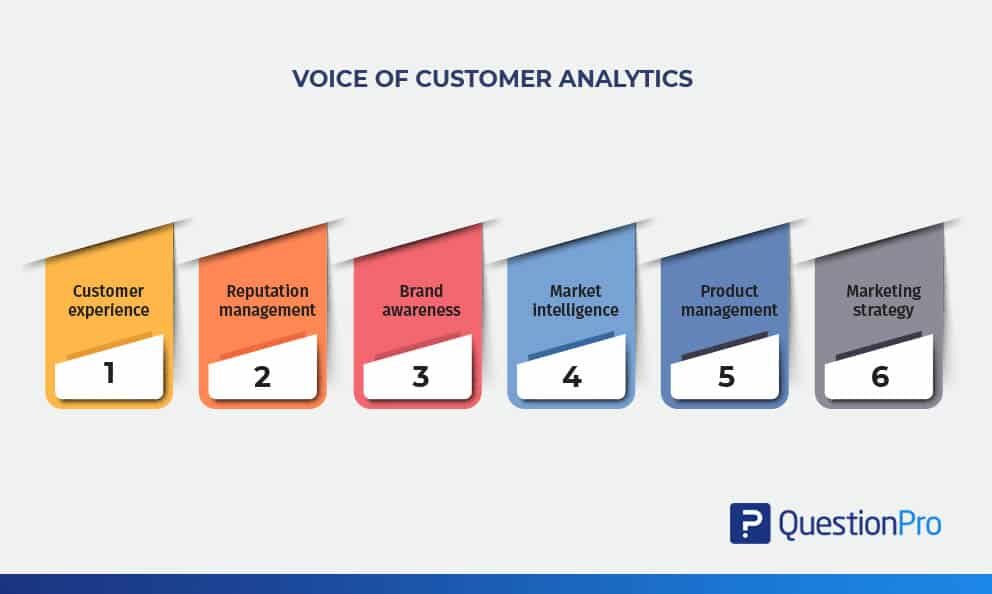
Image Source: Question Pro
Pinpointing Problem Areas: Sometimes businesses believe they’re offering top-tier services or products when, in reality, there might be significant issues they’re unaware of. VoC Analytics brings these problems to light, allowing companies to address them directly.
Understanding Customer Expectations: What do customers expect when they interact with a brand? Voice of Customer Analytics can provide clarity, ensuring that businesses can tailor their offerings to meet or even exceed these expectations.
Driving Innovation: By listening to the voice of the customer, businesses can find inspiration for new products or improvements on existing ones. It can lead to groundbreaking innovations that could propel a business ahead of its competitors.
Harnessing VoC Analytics for Enhanced Customer Experience
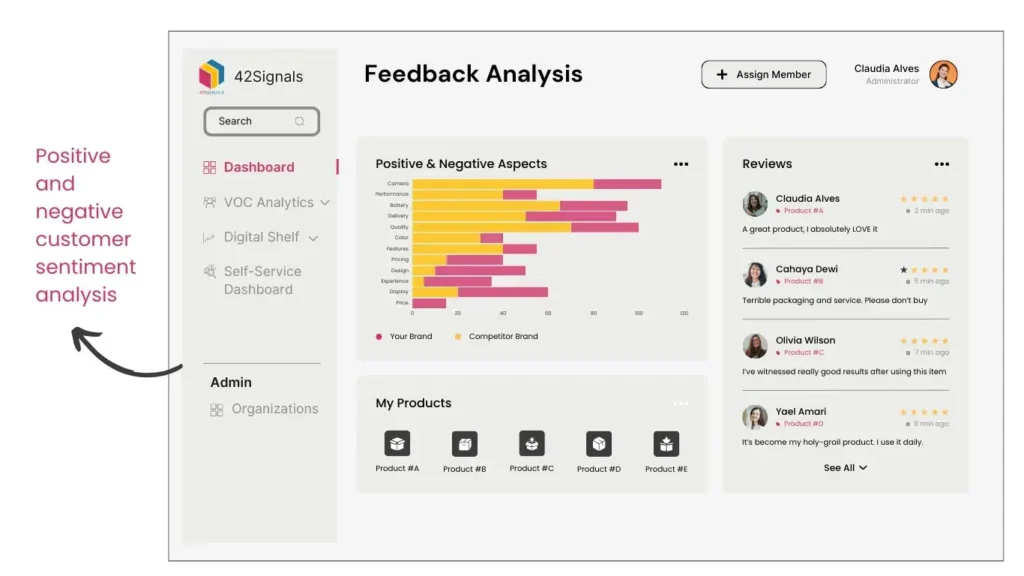
Image Source: 42Signals
1. Real-time Feedback Analysis
Modern customers expect brands to listen and respond in real time. With VoC tools like 42Signals, Sprout Social, or Clarabridge, businesses can monitor feedback across live chat, social media, reviews, and chatbots as it happens. For example:
Social Listening: A cosmetics brand spots a TikTok trend where customers complain about a foundation’s oxidation. Within hours, the brand’s social team replies with a video tutorial on shade-matching adjustments and notifies R&D to reformulate the product.
AI-Powered Sentiment Analysis: Tools like MonkeyLearn or Lexalytics scan thousands of support tickets instantly, flagging urgent issues (e.g., “website crashed during checkout”) for IT teams to resolve before revenue is impacted.
Closed-Loop Workflows: Integrate VoC platforms with CRM systems like Salesforce to trigger immediate follow-ups. If a customer rates their experience as “poor” in a post-purchase survey, automatically route the case to a manager for resolution within 24 hours.
2. Personalized Interactions
Voice of customer analytics data reveals not just what customers want, but who they are. Use these insights to segment audiences and deliver tailored experiences:
Adaptive Messaging: If VoC data shows Gen Z shoppers prefer casual, emoji-driven communication, adjust chatbot scripts and marketing copy to match their tone.
Dynamic Product Recommendations: Analyze purchase histories and feedback (e.g., “I wish this dress came in petite sizes”) to suggest relevant items. Sephora’s “Recommended for You” section, powered by VoC and browsing behavior, drives 35% of its revenue.
Targeted Campaigns: A travel agency discovers through surveys that adventure-seeking customers value eco-friendly tours. They launch a personalized email series highlighting carbon-neutral hiking trips, resulting in a 20% uptick in bookings.
3. Predictive Analysis
Advanced VoC Analytics tools can predict future customer behaviors based on past data. This allows businesses to anticipate the needs and preferences of their customers, thus offering solutions even before the customer realizes they need them.
- Churn Prevention: A SaaS company analyzes NPS feedback and usage patterns to identify at-risk customers. If a user mentions “complex interface” and logs in less frequently, the system triggers a personalized onboarding email with video tutorials.
- Demand Forecasting: A grocery chain notices repeated comments like “I can’t find organic snacks.” Predictive models cross-reference this feedback with sales data, prompting the chain to stock 30% more organic products in specific stores.
- Proactive Support: Telecom giant Comcast uses VoC-driven predictive analytics to flag customers likely to experience Wi-Fi issues based on historical complaints, dispatching technicians preemptively.
Challenges and Solutions
While the potential benefits of Voice of Customer Analytics are numerous, businesses might face challenges in implementing them:
Data Overload
The Challenge:
With feedback pouring in from surveys, social media, reviews, emails, chatbots, and call centers, businesses risk drowning in unstructured data. For example, a global retailer might collect 50,000+ customer comments monthly—too much for manual analysis.
The Solution:
Deploy AI-driven analytics tools to automate data processing and highlight critical insights:
- Sentiment Analysis Platforms: Tools like Clarabridge or Medallia use NLP (Natural Language Processing) to categorize feedback into themes (e.g., “shipping delays,” “product quality”).
- Prioritization Algorithms: Platforms like Qualtrics XM™ rank issues by urgency (e.g., a sudden spike in “payment errors” vs. recurring “packaging feedback”).
- Dashboards with Smart Alerts: Use Tableau or Power BI to set triggers (e.g., notify the CX team if negative sentiment on social media exceeds 15%).
Real-World Example:
Amazon uses AI to analyze millions of product reviews, surfacing trending complaints (e.g., “battery life”) to sellers and guiding product improvements.
Pro Tip: Start with a focused scope—analyze one channel (e.g., post-purchase surveys) before scaling.
Integrating Multiple Data Sources with Voice of Customer Analytics
The Challenge:
Feedback lives in silos: NPS scores in SurveyMonkey, social comments in Sprout Social, support tickets in Zendesk, and behavioral data in Google Analytics. Merging these disjointed sources is like solving a puzzle with mismatched pieces.
The Solution:
Invest in unified data integration platforms:
- Customer Data Platforms (CDPs): Tools like Segment or Tealium aggregate data from CRM, email, social, and IoT devices into a single customer profile.
- APIs and Middleware: Custom integrations (e.g., linking Shopify reviews to Salesforce) ensure seamless data flow.
- ETL Tools: Use Informatica or Talend to extract, transform, and load data into a centralized warehouse (e.g., Snowflake).
Real-World Example:
Starbucks integrates mobile app behavior, in-store purchases, and social media feedback into its CDP, enabling hyper-personalized offers (e.g., a free pastry for a customer who complained about a croissant shortage).
Pro Tip: Map your data ecosystem first—identify key sources and gaps before choosing tools.
Taking Action
The Challenge:
Many businesses stall at the “analysis paralysis” stage. A telecom company, for instance, might discover that 30% of complaints are about slow Wi-Fi but fail to act due to internal red tape.
The Solution:
Build a closed-loop system that ties insights to accountability:
- Assign Ownership: Designate teams to act on specific feedback types (e.g., product team handles “feature requests,” logistics team owns “delivery issues”).
- Set KPIs: Track resolution rates (e.g., “Reduce CES scores related to returns by 20% in Q4”).
- Transparent Reporting: Share VoC insights company-wide via monthly CX dashboards.
- Customer Follow-Up: After resolving an issue, notify the customer (e.g., “We’ve upgraded our Wi-Fi routers—thanks for your feedback!”).
Real-World Example:
Zappos uses a “Customer Insights War Room” where cross-functional teams review top VoC trends weekly and commit to fixes within 48 hours.
Pro Tip: Start with quick wins—like fixing a broken checkout button—to build momentum for larger initiatives.
Conclusion
The role of Voice of Customer Analytics in improving customer experience is paramount. It bridges the gap between businesses and their customers, fostering understanding and enabling companies to deliver superior value.
By effectively implementing VoC Analytics, businesses can not only keep pace with customer expectations but also set the standard for exceptional customer experiences.
To know how 42Signals can be an effective partner, visit our pricing page today.

